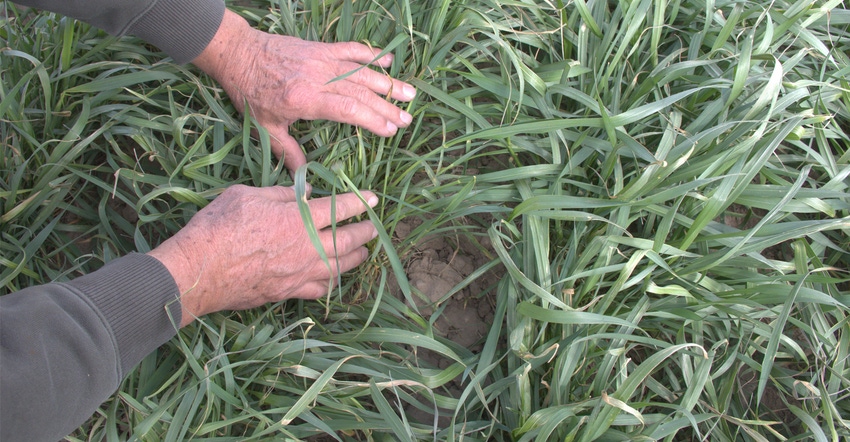
If you’re headed out to scout your wheat fields for freeze damage in the wake of the multiple hard freezes, you might want to be on the lookout for diseases, too, especially stripe rust, according to Erick DeWolf, Kansas State University pathologist.
The likelihood of freeze damage is greatest in south-central and southeast Kansas, where the crop was nearing flag leaf emergence with the growing point well above the ground. Further to the north and west, much of the crop is still tillering or just at jointing.
If the growing point is still below the ground, hard red winter wheat can generally withstand temperatures of 15-20 degrees F fairly well.
The higher the growing point has grown, the greater the risk of damage from temperatures as cold as 23 and 24 degrees, which much of the southern part of Kansas saw on multiple occasions from April 13 to April 17.
While soil temperatures can help buffer freezing air temperatures if the growing point is below ground or near the soil surface, the buffering capacity decreases as the crop develops and the growing point moves away from the soil surface.
K-State Extension wheat specialist Romulo Lolatto says the best way to find freeze damage is to split the stem with a pocket knife to expose the developing head. If it is crisp and green, the plant is healthy. If it is white or yellowish and mushy, the tiller is dead.
DeWolfe says there have been some reports of stripe rust from Oklahoma and a Twitter report of the disease in southeast Kansas bordering Missouri. Several of DeWolf's colleagues made visits to research sites in south-central Texas and reported severe leaf rust on varieties known to be susceptible to that disease.
To date, Extension agents, crop consultants and growers all indicate that rust is not widely active in Kansas.
"Look for the characteristic yellow rectangular lesions of the stripe rust pathogen," says DeWolf, adding that sometimes on the young plants around the jointing stages of growth, "we don't often get the rectangular look to some of the stripe rust lesions."
When people think of stripe rust, they often visualize the characteristic bright yellowish-orange lesions on adult plants. Symptoms of stripe rust on younger leaves are often less rectangular because the fungal growth within the plant is not limited by the veins of younger leaves.
With the wheat crop in south-central and southeast Kansas approaching or already at the flag leaf emergence stages of growth, farmers are encouraged to be on the lookout for diseases. More in-field observations will be happening over the next few weeks.
More information about freeze injury and how to identify wheat rust diseases is available from K-State Research and Extension's April 17th Agronomy eUpdate.
Some of the content of this article was provided by Kansas Wheat.
About the Author(s)
You May Also Like






